#Feed Additives Market share
Explore tagged Tumblr posts
Text
Feed Additives Market Analysis 2028 By Size, Share, Trends, and Forecast
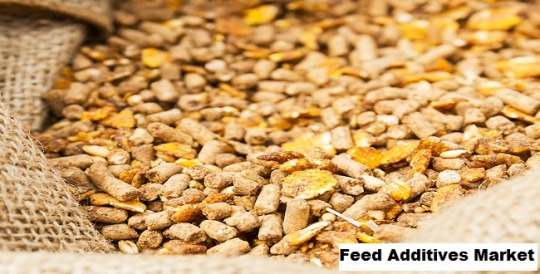
Global Feed Additives market is expected to grow in the forecast period 2024-2028 due to rising demand of livestock products
According to TechSci Research report, “Feed Additives Market - Global Industry Size, Share, Trends, Opportunity, and Forecast, 2018-2028”, Global Feed Additives Market is anticipated to upsurge at an impressive rate in the forecast period 2024-2028. A significant factor fueling the growth of the Global Feed Additives Market is increasing demand for livestock products. Additionally, increasing consumption of animal-based goods with standardization of food products due to disease outbreaks, the demand for feed additives rises which further fuels the growth of Global Feed Additives Market.
For instance, in September 2020, Adisseo acquired Framelco G to enhance the growth specialty feed ingredients in animal nutrition.
Furthermore, the market is being further stimulated by the growing demand for natural and organic based feed additives as well as rising concern regarding the safety of animal health.
However, fluctuation in raw material prices can slow down market growth. Also, stringent regulations on the usage of some antibiotics can further slowdown market growth.
Browse over XX market data Figures spread through XX Pages and an in-depth TOC on the "Global Feed Additives Market" https://www.techsciresearch.com/report/feed-additives-market/15102.html
Global Feed Additives Market is segmented based on ingredient type, livestock, form, and region.
Based on ingredient type, the market is categorized into antibiotics, vitamins, enzyme, antioxidants, probiotics, and others. Probiotics are expected to hold the largest market share in the forecast period, 2024-2028. As they help to maintain and improve the performance of the animal and prevent and control enteric pathogens.
Based on livestock, the market is fragmented into poultry, ruminants, swine, aquatic animals, and others. Poultry is expected to hold the largest market share in the forecast period, 2024-2028. This is due to rising preferences for a specific color of yolk and meat for consumption.
Based on form, the market is segregated into dry and liquid. Dry segment will experience the highest market share during the forecast period, 2024-2028. Due to its convenient storage and packaging, longer shelf life, and easy to use features.
Major companies operating in the Global Feed Additives Market are:
Bluestar Adisseo Co., Ltd
Koninklijke DSM N.V.
BASF SE
Nutreco N.V.
Cargill, Incorporated
Danisco Animal Nutrition & Health
Alltech, Inc.
The Archer-Daniels-Midland Company
Chr. Hansen Holding A/S
Evonik Industries AG
Download Free Sample Report https://www.techsciresearch.com/sample-report.aspx?cid=15102
Customers can also request for 10% free customization on this report.
“Asia Pacific region is expected to grow at the highest rate during the forecast period due to increasing demand for processed meat and protein diets. Additionally, increasing demand for feed additives for the enhancement of nutritional quality of feed as well as increasing production of animal protein creates lucrative opportunities for market growth. Furthermore, in North America, intense presence of the mills and pet food producing industries as well as growing health concern with respect to meat consumption create huge prospects of market growth during the forecast period,” said Mr. Karan Chechi, Research Director with TechSci Research, a research-based global management consulting firm.
“Feed Additives Market- Global Industry Size, Share, Trends, Opportunity, and Forecast, 2018-2028 Segmented By Ingredient Type (Antibiotics, Vitamins, Enzyme, Antioxidants, Probiotics, Others), By Livestock (Poultry, Ruminants, Swine, Aquatic Animals, Others), By Form (Dry, Liquid), By Region and Competition, has evaluated the future growth potential of global Feed Additives market and provides statistics & information on market size, structure, and future market growth. The report intends to provide cutting-edge market intelligence and help decision makers take sound investment decisions. Besides, the report also identifies and analyzes the emerging trends along with essential drivers, challenges, and opportunities in Global Feed Additives Market.”
Browse Related Reports
India Soil Testing Equipment Market
India Seed Market
India Crop Protection Chemicals Market
Contact
Mr. Ken Mathews
708 Third Avenue,
Manhattan, NY,
New York – 10017
Tel: +1-646-360-1656
Email: [email protected]
Website: https://www.techsciresearch.com
#Feed Additives Market#Feed Additives Market Size#Feed Additives Market Share#Feed Additives Market Trends#Feed Additives Market Growth#Feed Additives Market Forecast
0 notes
Text
#Feed Additives Market#Feed Additives Market size#Feed Additives Market share#Feed Additives Market trends#Feed Additives Market analysis#Feed Additives Market forecast#Feed Additives Market outlook#Feed Additives Market overview#Feed Additives Market report
0 notes
Text
Feed Additives Market Size, Growth Drivers | Forecast 2029
According to Precision Business Insights, the Feed Additives Market to grow at a CAGR of 5.7% by forecast 2029. It is segmented by Type, livestock, Form & Source
The global feed additives market size was valued at USD 40.3 billion in 2022 and is poised to grow at a significant CAGR of 5.7% during the forecast period 2023-29. It also includes market size and projection estimations for each of the five major regions from 2023 to 2029. The research report includes historical data, trending features, and market growth estimates for the future. Furthermore, the study includes a global and regional estimation and further split by nations and categories within each region. The research also includes factors and barriers to the feed additives market growth, as well as their impact on the market's future growth. The report gives a comprehensive overview of both primary and secondary data.
View the detailed report description here - https://www.precisionbusinessinsights.com/market-reports/feed-additives-market
The global feed additives market segmentation: 1) By Source : Synthetic and Natural
2) By Additive Type : Amino acids, Phosphates, Vitamins, Acidifiers, Carotenoids, Enzymes, Mycotoxin Detoxifiers, Flavors & Sweeteners, Antibiotics, Minerals, Antioxidants, Non-protein Nitrogen, Phytogenics, Preservatives, and Probiotics
3) By Animal Type : Poultry, Ruminants, Swine, Aquatic animals, and Other Livestock
4) By Form : Dry and Liquid
The primary factors of the feed additives market drivers are the Increase in meat production and consumption. The feed additives market report helps to provide the best results for business enhancement and business growth. It further helps to obtain the reactions of consumers to a novel product or service. It becomes possible for business players to take action for changing perceptions. It uncovers and identifies potential issues of the customers. It becomes easy to obtain the reactions of the customers to a novel product or service. It also enlightens further advancement, so it suits its intended market.
The feed additives market researchreport gives a comprehensive outlook across the region with special emphasis on key regions such as North America, Europe, Asia Pacific, Latin America, and the Middle East and Africa. North America was the largest region in the feed additives market report, accounting for the highest share in 2022. It was followed by Asia Pacific, and then the other regions. Request sample report at - https://www.precisionbusinessinsights.com/request-sample/?product_id=56607 The important profiles and strategies adopted by feed additives market key players AFB International Alltech Kemin Industries, Inc. Vitablend Asia Pacific Pte. Ltd. Kalsec, Inc. DSM Ameri-Pac, Inc. BASF SE Evonik Industries AG FoodSafe Technologies Lallemand, Inc. DuPont, covered here to help them in strengthening their place in the market.
About Precision Business Insights: We are a market research company that strives to provide the highest quality market research insights. Our diverse market research experts are enthusiastic about market research and therefore produce high-quality research reports. We have over 500 clients with whom we have a good business partnership and capacity to provide in-depth research analysis for more than 30 countries. In addition to deliver more than 150 custom solutions, we already have accounts with the top five medical device manufacturers.
Precision Business Insights offers a variety of cost-effective and customized research services to meet research requirements. We are a leading research service provider because of our extensive database built by our experts and the services we provide.
Contact:
Mr. Satya
Precision Business Insights | Toll Free: +1 866 598 1553
Email: [email protected] Kemp House, 152 – 160 City Road, London EC1V 2NX Web: https://precisionbusinessinsights.com/ | D U N S® Number: 852781747
#feed additives market size#feed additives market growth drivers#feed additives market trends analysis#feed additives market share#feed additives market demand
0 notes
Text
Exploring the Growth of Mexico's Feed Additives Market: Trends, Drivers, and Future Outlook
Introduction:
The Mexico Feed Additives Market is projected to be valued at USD 1.36 billion in 2024 and is expected to reach USD 1.7 billion by 2029, growing at a compound annual growth rate (CAGR) of 4.58% during the forecast period (2024-2029).
The Mexico feed additives market has seen significant growth in recent years, driven by the expanding livestock sector and the rising demand for meat products.
Key Drivers:
Growing Livestock Industry: The increasing demand for high-quality meat products, poultry, and dairy has led to a rise in livestock farming, boosting the need for effective feed additives.
Focus on Animal Health: With greater awareness of animal welfare, there is a growing demand for feed additives that enhance nutrition, prevent diseases, and reduce the use of antibiotics.
Government Support and Regulations: Mexico's government policies promoting food safety and agricultural development have fueled investments in sustainable and efficient feed practices.
Export Opportunities: Mexico’s strong trade partnerships with countries like the United States, where food quality standards are stringent, have pushed local farmers to adopt advanced feed solutions to meet export requirements.
Key Trends:
Shift Toward Natural Additives: There is an increasing shift toward organic and natural feed additives like probiotics, prebiotics, and enzymes, in response to consumer demand for chemical-free meat products.
Sustainability Initiatives: Farmers are looking for eco-friendly feed solutions that reduce environmental impact, further pushing the demand for innovative feed additives.
Technological Advancements: Innovations in animal nutrition science are driving the development of more effective feed additives, leading to better feed conversion ratios and improved animal growth.
Challenges:
Fluctuating Raw Material Prices: The cost of raw materials required for producing feed additives can fluctuate, impacting the overall pricing and availability in the market.
Regulatory Compliance: While government regulations ensure high standards, they also require feed additive manufacturers to adapt quickly, which may increase operational costs.
Future Outlook: The Mexico feed additives market is expected to witness continued growth due to advancements in animal nutrition, a focus on sustainable farming, and increasing demand for healthier meat and dairy products. By embracing innovation and sustainability, the industry can maintain its upward trajectory and meet both local and international demands.
Conclusion: The Mexico feed additives industry plays a pivotal role in shaping the country’s agricultural landscape. As the sector continues to grow, businesses and farmers that invest in high-quality, sustainable feed additives will be better positioned to succeed in an increasingly competitive global market.
#Mexico feed additives market size#Mexico feed additives market share#Mexico feed additives market analysis
0 notes
Text
Phytogenic Feed Additives Market: Growth, Benefits, and Future Trends
The phytogenic feed additives market is gaining significant traction in the global animal nutrition industry. These natural additives, derived from herbs, spices, and other plants, are increasingly being recognized for their ability to improve animal health and performance. As consumers demand more sustainable and natural products, the market for phytogenic feed additives is poised for robust growth. This article explores the current trends, key drivers, benefits, applications, and future outlook of the phytogenic feed additives market.

Market Overview
The global phytogenic feed additives market has been growing steadily, with a market size valued at approximately USD X billion in 2023. It is projected to reach USD Y billion by 2030, growing at a CAGR of Z% during the forecast period. The rise in demand for natural feed additives, driven by increasing consumer awareness and regulatory pressures, is a primary factor fueling this growth.
Key Drivers
1. Consumer Demand for Natural Products: There is a growing consumer preference for natural and organic products, including meat and dairy. Phytogenic feed additives offer a natural alternative to synthetic additives and antibiotics, aligning with consumer demand for clean-label products.
2. Regulatory Pressures: Stringent regulations regarding the use of antibiotics in animal feed, particularly in Europe and North America, have accelerated the adoption of phytogenic feed additives. These natural additives help in promoting animal health without the risks associated with antibiotic resistance.
3. Improved Animal Performance: Phytogenic feed additives are known to enhance feed intake, digestion, and nutrient absorption, leading to better growth rates and overall performance in livestock. This results in improved productivity and profitability for farmers.
4. Sustainability: The emphasis on sustainable agriculture practices is another key driver. Phytogenic feed additives are derived from renewable plant sources and have a lower environmental impact compared to synthetic alternatives.
For a comprehensive analysis of the market drivers:- https://univdatos.com/report/phytogenic-feed-additives-market/
Benefits of Phytogenic Feed Additives
Phytogenic feed additives offer several benefits that contribute to their growing popularity:
- Enhanced Digestion and Nutrient Absorption: These additives stimulate the secretion of digestive enzymes, improving feed efficiency and nutrient absorption in animals. This leads to better growth rates and feed conversion ratios.
- Antimicrobial Properties: Many phytogenic compounds possess antimicrobial properties that help in reducing the prevalence of pathogens in the gut. This contributes to better gut health and reduces the need for antibiotics.
- Anti-inflammatory Effects: Phytogenic feed additives can have anti-inflammatory effects, reducing stress and improving overall health and well-being in livestock.
- Improved Palatability: The inclusion of herbs and spices can enhance the palatability of feed, encouraging higher feed intake and better growth performance.
Applications
Phytogenic feed additives are used across various segments of the animal nutrition industry:
- Poultry: In poultry production, these additives are used to improve gut health, enhance growth rates, and reduce the need for antibiotics. They are particularly effective in broilers and layers.
- Swine: For swine, phytogenic feed additives help in improving digestion, reducing stress, and enhancing immune function. They are commonly used in piglets and finishing pigs.
- Ruminants: In ruminant production, these additives support better digestion and nutrient absorption, leading to improved milk yield and meat quality in cattle, sheep, and goats.
- Aquaculture: Phytogenic additives are also gaining popularity in aquaculture, where they help in improving feed efficiency, growth rates, and disease resistance in fish and shrimp.
Regional Insights
The phytogenic feed additives market is geographically diverse, with significant growth observed in North America, Europe, and Asia-Pacific.
- North America: The North American market is driven by stringent regulations on antibiotic use and the growing demand for natural products. The United States and Canada are key markets in this region.
- Europe: Europe is a major player in the market, with strong regulatory frameworks promoting the use of natural feed additives. Countries like Germany, France, and the Netherlands are leading in the adoption of phytogenic feed additives.
- Asia-Pacific: The Asia-Pacific region is experiencing rapid market growth, driven by the expanding livestock and aquaculture industries in countries like China, India, and Japan. Increasing awareness about the benefits of natural feed additives is also contributing to market expansion.
For a sample report, visit:- https://univdatos.com/get-a-free-sample-form-php/?product_id=34910
Future Prospects
The future of the phytogenic feed additives market looks promising, with several trends expected to shape its trajectory:
- Innovation and Product Development: Continuous research and development will lead to the introduction of new and improved phytogenic feed additives with enhanced efficacy and stability. Innovations in extraction and formulation techniques will also play a crucial role.
- Increased Adoption in Emerging Markets: As awareness about the benefits of phytogenic feed additives grows, their adoption in emerging markets, particularly in Asia-Pacific and Latin America, is expected to increase significantly.
- Focus on Sustainability: The emphasis on sustainable agriculture practices will drive the development and use of eco-friendly phytogenic feed additives. This trend aligns with global environmental goals and consumer preferences.
In conclusion, the phytogenic feed additives market is poised for robust growth, driven by consumer demand for natural products, regulatory pressures, and the numerous benefits these additives offer. As the animal nutrition industry continues to evolve towards more sustainable and natural solutions, phytogenic feed additives will play a crucial role in shaping the future of livestock production.
Contact Us:
UnivDatos Market Insights
Email - [email protected]
Contact Number - +1 9782263411
Website -www.univdatos.com
#Phytogenic Feed Additives Market#Phytogenic Feed Additives Market Growth#Phytogenic Feed Additives Market Share#Phytogenic Feed Additives Market Forecast
0 notes
Text
Exploring Innovations Revolutionizing the Animal Feed Industry
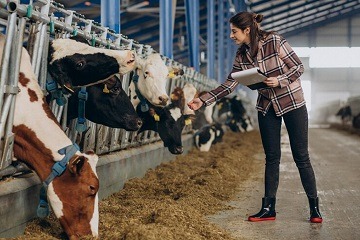
Introduction
The global animal feed market was valued at over USD 460 billion in 2021 and is projected to exceed USD 650 billion by 2028, registering a compound annual growth rate CAGR of 4% during the forecast period. The Animal Feed Market is experiencing dynamic changes driven by evolving consumer preferences, technological advancements, and sustainability initiatives. This in-depth analysis delves into the latest innovations shaping the animal feed industry, providing insights into key trends, opportunities, and challenges for stakeholders.
Innovations Driving the Animal Feed Market:
Alternative Protein Sources:
With the escalating demand for sustainable and plant-based diets, alternative protein sources for animal feed formulations are gaining momentum.
Innovations in insect protein production, algae cultivation, single-cell proteins, and microbial biomass offer sustainable alternatives to conventional protein sources like soybean meal and fishmeal.
These alternative protein sources not only promote environmental sustainability but also provide essential nutrients for animals while reducing reliance on scarce resources.
Precision Nutrition:
Advancements in precision nutrition technologies are reshaping feed formulation and delivery, enabling customized diets tailored to individual animals' specific nutritional requirements.
Technologies such as near-infrared spectroscopy (NIRS), metabolomics, and predictive modeling enable real-time monitoring of animal health, performance, and nutrient utilization, leading to more efficient feed management practices.
The precision nutrition segment is anticipated to witness substantial growth, driven by increasing investments in digital technologies and data analytics, with the market expected to surpass USD 3 billion by 2028.
Alternative protein sources are expected to capture a significant market share, with insect protein alone projected to reach USD 1.5 billion by 2028.
Functional Feed Additives:
Functional feed additives, including probiotics, prebiotics, enzymes, organic acids, and botanical extracts, are gaining prominence for their potential to enhance animal health, immunity, and performance.
These additives support gut health, improve nutrient absorption, and mitigate the adverse effects of stress, pathogens, and environmental challenges on animal welfare.
Innovations in encapsulation and delivery technologies are enhancing the stability and efficacy of functional additives, ensuring their effectiveness throughout the animal's digestive tract.
Blockchain and Traceability:
Blockchain technology is increasingly being harnessed to enhance transparency, traceability, and accountability in the animal feed supply chain.
Through blockchain-based platforms, stakeholders can track feed ingredient journeys from farm to fork, ensuring compliance with quality standards, safety regulations, and sustainability criteria.
Blockchain facilitates seamless data sharing and verification across the supply chain, mitigating the risks of fraud, contamination, and mislabeling, thereby safeguarding animal and human health while bolstering consumer trust.
Challenges and Opportunities
Regulatory Hurdles:
Despite the potential benefits of innovative feed technologies, regulatory hurdles and approval processes can impede their adoption and commercialization.
Stakeholders must navigate complex regulatory landscapes and demonstrate the safety, efficacy, and sustainability of novel feed ingredients and additives to gain regulatory approval and market acceptance.
Cost Considerations:
The adoption of innovative feed technologies may involve higher initial costs and necessitate investment in research and development.
Stakeholders must carefully evaluate the cost-benefit ratio of implementing new technologies, considering factors such as feed efficiency improvements, animal performance gains, and long-term sustainability benefits.
Conclusion
Innovation is driving profound changes in the Animal Feed Market, offering transformative solutions to meet the evolving needs of livestock producers, consumers, and the environment. By embracing cutting-edge technologies and addressing regulatory challenges, stakeholders can unlock new opportunities for sustainable and profitable animal nutrition solutions while ensuring the health, welfare, and productivity of animals.
#Animal Feed Suppliers#Animal Feed Companies#Animal Feed Additives Market#Animal Feed Market Share#Animal Feed Market#Animal Feed Industry#Animal Feed Market Size#Compound Feed Market#Global Animal Feed Market#Global Animal Feed Market Size#Animal Feed Composition Market#Animal Feed Industry Trends#Animal Feed Market Growth#Animal Feed Market Challenges#Animal Feed Market Type#Animal Feed Market Research Reports#Animal Feed Industry Research Reports#Animal Feed Supplements Market#Animal Feed Suppliers Market
0 notes
Text
Animal Feed Additives Market Outlook for Forecast Period (2023 to 2030)
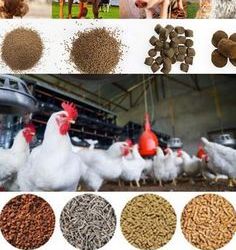
Global Animal Feed Additives Market was valued at USD 22.15 Billion in 2021 and is expected to reach USD 33.75 Billion by the year 2028, at a CAGR of 6.2%.
Feed additives is substance or combination of ingredients mixed into the basic feed mix or parts thereof to cater to the specific need. Feed additives form an essential part of animal nutrition, which enhances the feed quality, yield & quality of food from animal origin, and animal health. Generally, application in microquantities and requires careful handling and mixing. It is used to enhance the rate of gain, feed efficiency, preventing and controlling disease, prevention against untoward environmental influences. Furthermore, feed additives have main two types such as nutrient feed additives which include amino acids, minerals, and vitamins, and non-nutrient feed additives which include antibiotics, hormones, immunomodulators, enzymes, probiotics.
Leading players involved in the Animal Feed Additives Market include:
BASF SE, Tyson Foods Inc., Lallemand Inc., Kemin Industries, E. I. du Pont de Nemours and Company, Ajinomoto Co. Inc., Koninklijke DSM N.V., Akzo Nobel N.V., Alltech Inc., Biomin GmbH, Cargill Inc., Chr. Hansen Holding A/S, CP Group, Evonik Industries AG, Norel S.A., Novozymes A/S, Nutreco, Phibro Animal Health Corporation, Novus International Inc., Solvay Group, Archer Daniels Midland Company, Invivo Group and others Major players.
Get Full PDF Sample Copy of Report: (Including Full TOC, List of Tables & Figures, Chart) @
https://introspectivemarketresearch.com/request/15841
The latest research on the Animal Feed Additives market provides a comprehensive overview of the market for the years 2023 to 2030. It gives a comprehensive picture of the global Animal Feed Additives industry, considering all significant industry trends, market dynamics, competitive landscape, and market analysis tools such as Porter's five forces analysis, Industry Value chain analysis, and PESTEL analysis of the Animal Feed Additives market. Moreover, the report includes significant chapters such as Patent Analysis, Regulatory Framework, Technology Roadmap, BCG Matrix, Heat Map Analysis, Price Trend Analysis, and Investment Analysis which help to understand the market direction and movement in the current and upcoming years. The report is designed to help readers find information and make decisions that will help them grow their businesses. The study is written with a specific goal in mind: to give business insights and consultancy to help customers make smart business decisions and achieve long-term success in their particular market areas.
If You Have Any Query Animal Feed Additives Market Report, Visit:
https://introspectivemarketresearch.com/inquiry/15841
Segmentation of Animal Feed Additives Market:
By Type
Amino Acids
Antibiotics
Feed Enzymes
Feed Acidifiers
Vitamins
Others
By Form
Dry
Liquid
By Source
Synthetic
Natural
By Livestock
Ruminant
Swine
Poultry
Aquaculture
Others
An in-depth study of the Animal Feed Additives industry for the years 2023–2030 is provided in the latest research. North America, Europe, Asia-Pacific, South America, the Middle East, and Africa are only some of the regions included in the report's segmented and regional analyses. The research also includes key insights including market trends and potential opportunities based on these major insights. All these quantitative data, such as market size and revenue forecasts, and qualitative data, such as customers' values, needs, and buying inclinations, are integral parts of any thorough market analysis.
Market Segment by Regions: -
North America (US, Canada, Mexico)
Eastern Europe (Bulgaria, The Czech Republic, Hungary, Poland, Romania, Rest of Eastern Europe)
Western Europe (Germany, UK, France, Netherlands, Italy, Russia, Spain, Rest of Western Europe)
Asia Pacific (China, India, Japan, South Korea, Malaysia, Thailand, Vietnam, The Philippines, Australia, New Zealand, Rest of APAC)
Middle East & Africa (Turkey, Bahrain, Kuwait, Saudi Arabia, Qatar, UAE, Israel, South Africa)
South America (Brazil, Argentina, Rest of SA)
Reasons for Acquiring this Report:
1. Strategic Decision-Making for Government Leaders and Politicians:
Gain insights into the global Animal Feed Additives Market Growth 2023-2030 market revenues at global, regional, and national levels until 2030. Assess and strategize market share based on comprehensive analysis, enabling informed decision-making. Identify potential markets for exploration and expansion.
2. Informed Decision-Making for Professionals and Product Developers:
Access a detailed breakdown of the Animal Feed Additives Market Growth 2023-2030 market worldwide, including product variations, use cases, technologies, and final consumers. Allocate resources effectively by anticipating demand patterns for emerging products. Stay ahead in product development by understanding market dynamics and consumer preferences.
3. Strategic Planning for Sales Managers and Market Stakeholders:
Utilize market breakdowns to target specific segments, optimizing sales strategies. Address challenges and capitalize on expansion opportunities highlighted in the report. Mitigate threats effectively with a comprehensive understanding of market risks.
4. Comprehensive Understanding for Executives:
Analyze primary drivers, challenges, restrictions, and opportunities in the global Laboratory Clothes market. Develop effective strategies by gaining insights into market dynamics. Allocate resources based on a thorough understanding of market conditions.
5. Competitive Intelligence:
Obtain a detailed analysis of competitors and their key tactics in the Animal Feed Additives Market Growth 2023-2030. Plan market positioning based on a comprehensive understanding of the competitive landscape. Stay ahead by learning from competitors’ strengths and weaknesses.
6. Accurate Business Forecasting:
Evaluate the accuracy of global Animal Feed Additives Market Growth 2023-2030 business forecasts across regions, major countries, and top enterprises. Make data-driven decisions with confidence, minimizing risks associated with inaccurate forecasts. Stay ahead of industry trends by aligning business strategies with reliable forecasts.
Acquire This Reports: -
https://introspectivemarketresearch.com/checkout/?user=1&_sid=15841
About us:
Introspective Market Research (introspectivemarketresearch.com) is a visionary research consulting firm dedicated to assisting our clients to grow and have a successful impact on the market. Our team at IMR is ready to assist our clients to flourish their business by offering strategies to gain success and monopoly in their respective fields. We are a global market research company, that specializes in using big data and advanced analytics to show the bigger picture of the market trends. We help our clients to think differently and build better tomorrow for all of us. We are a technology-driven research company, we analyse extremely large sets of data to discover deeper insights and provide conclusive consulting. We not only provide intelligence solutions, but we help our clients in how they can achieve their goals.
Contact us:
Introspective Market Research
3001 S King Drive,
Chicago, Illinois
60616 USA
Ph no: +1-773-382-1047
Email: [email protected]
#Animal Feed Additives#Animal Feed Additives Market#Animal Feed Additives Market Size#Animal Feed Additives Market Share#Animal Feed Additives Market Growth#Animal Feed Additives Market Trend#Animal Feed Additives Market segment#Animal Feed Additives Market Opportunity#Animal Feed Additives Market Analysis 2022#US Animal Feed Additives Market#Animal Feed Additives Market Forecast#Animal Feed Additives Industry#Animal Feed Additives Industry Size#china Animal Feed Additives Market#UK Animal Feed Additives Market
0 notes
Text
COMMISSIONS OPEN!
Hey everyone! My commissions are officially open! You can check out the picture below for the basic price info, and see everything under the cut for everything else!!

PRICE INFO:
BASE PRICES:
Headshot: $5
Bust: $10
Half-Body: $15
Full Body: $20
COLOUR PRICES:
Sketch: + $0
Lineart: + $10
Flat Colours: + $15
Shading + Colour: + 25
NOTE: These prices DO stack! Let's say you wanted to commission a half-body lineart! A half-body commission is $15 at its base price, and adding the lineart price on top of that is an additional $10. Your commission would come out to be $25 total.
—
ADD-ONS:
Any extra characters will be an additional 50% of your total. If you wanted a full colour bust commission of 2 characters, it would be $47.50 [Full colour + Bust price + 50% of that total price]
BACKGROUNDS:
Flat Colour: + $0
Simple Pattern: + $5
Simple Scene: + $10
Detailed Scene: + $15
NOTE: When it comes to total commission price, the background price is separate. The background price will not affect the 50% Extra Character fee.
—
WILL:
- Anthro/Furry, Pokémon, Humans, and Ponies (MLP)
- Character reference sheets
- Fanart/Canon Characters, and Original Characters
- Ships (OC x OC, OC x Canon, Canon x Canon)
- Mild blood, bones, and any kind of scars
WILL NOT:
- Full Armour or Mechs
- Fetish/NSFW, or heavy/extreme gore
—
T.O.S.
I, AS THE ARTIST...
- Maintain the rights to post my work in any form.
- Maintain the rights to post (WATERMARKED) commissions as marketing, so long as the client does not request otherwise.
- Maintain the rights to decline or cancel any commission, so long as payment has not been received. If payment has been received, I, the artist, will issue a full refund.
YOU, AS THE CLIENT...
- May NOT use my work in a commercial setting, regardless of how it is used. This includes prints, stickers, buttons, keychains, etc.
- May NOT feed my art into AI of any kind, or use my art to generate other AI works.
- May request changes and edits during the sketch and lineart phase. I will send progress pictures of both.
- May post your commission to your own social media or website, so long as I am credited or linked back to somewhere.
- May use your commission as an avatar, banner, icon, etc. so long as I am credited or linked back to somewhere.
- May crop, edit, or resize the commission to your liking. However, if you are sharing it publicly, please credit and/or link back to me.
—
HOW TO REACH ME
discord: @emptydoorways
tumblr: @emptydoorways
tiktok: @emptydoorways
email: [email protected]
ACCEPTED PAYMENTS
I do request that payment is given up front once the commission is confirmed. If you are not comfortable with this, please tell me, and I am willing to negotiate.
I take PayPal and Venmo!
If you don't have access to either, we can negotiate other routes of payment.
You can also donate to my Ko-Fi for tips!
HOW TO ORDER
Please do not dm me just going "hi!", or something similar. I will ignore any sort of messages such as this. If you are interested in buying a commission, please message me stating that you are looking to commission, and send a filled out order form for what you would like to buy. We can discuss other details after confirming your commission. :-]
ORDER FORM
Payment Type:
Commission Type:
Reference Image(s):
Details (Pose, Expression, etc):
—
SOME OF MY WORK!
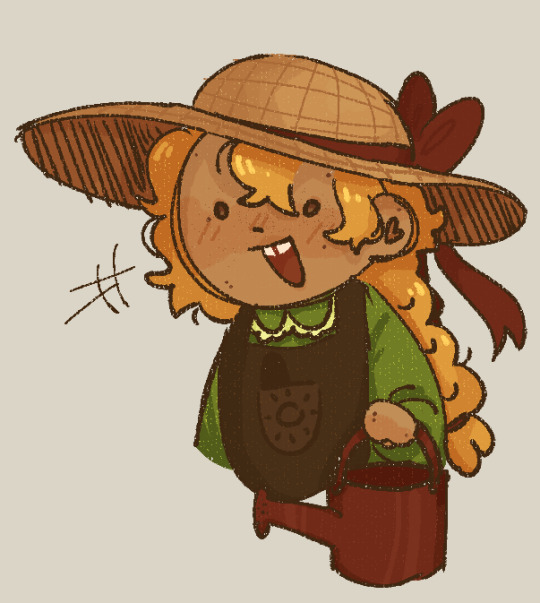



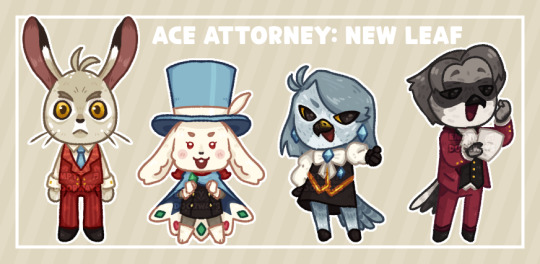
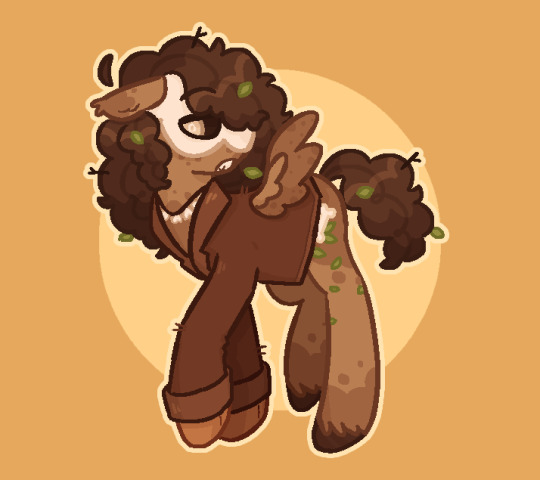

#doorways art#doorways doodles#doorways chats#ace attorney#aa4#apollo justice#klavier gavin#oc#mlp#commission#commissions#commissions open#commission me#please#art commissions
18 notes
·
View notes
Note
hello!! I have a few questions about hobbit relationships. For one, I've read a lot of stuff where people say that hobbit's aren't shy and have a couple partners in their lives, but I've also gotten the impression that they can be sort of conservative and private about their love lives, what would your take be on this? Would they like public displays of affection? Would they keep it in their smials? And, courting rituals/things considered romantic, what do you think that would look like? I've read that going on walks and eating food/feeding each other are pretty classic for hobbits, and also building gardens are pretty big proposals/wedding gifts, are there any other traditions you headcanon or have seen yourself? Thank you so much for having this, it helps a lot;-; expect to see more of me in the future lol!
💐 ASK ME about my headcanons about hobbits and the Shire! 💐
Ah, dearest gentle reader! Welcome to my inbox! I am so glad you have found your way to my humble abode. Have a seat, have some tea and seed cake, and make yourself at home, for in honor of the new season of Bridgerton, we shall talk about love, courtship, and marriage in the Shire! (@konartiste, I think you'll enjoy the Bridgerton parallels)
First things first. I base what I imagine to be true on Tolkien's own portrayal of the hobbits as a caricature of British country dwellers in the early 20th century. I will derive my answers from both book-canon and movie-canon.
Let’s begin with your question about whether hobbits are shy and conservative. If we go off the early 20th century rural Britain hypothesis, then the answer is yes and no. There are certainly higher standards of propriety than we are used to in our society; however, by dint of being rural and closer to the earth so to speak, they are more relaxed than, say, the denizens of a city like Minas Tirith. For instance, premarital sex is generally frowned upon, but since there are many cozy barns, haystacks, and woods, as well as dark corners in sprawling smails, you can bet that it happens anyway, and everyone knows it, but does not speak of it except in whispers.
Similarly, there is friendship and courtship, and men and women share many daily tasks and mingle easily, but there is nothing like casual dating as we understand it. Courtship almost always has marriage in mind -- which is why Rosie was unhappy with Sam for making her wait so long: if you do not see yourself marrying someone, you simply remain friends or move on, and it is improper and disrespectful to do otherwise. In addition, with regard to public displays of affection, there are at least two instances of hobbits kissing in public in The Lord of the Rings and The Hobbit movies, so walking hand in hand and a light kiss here and there are probably acceptable, but certainly nothing more than that -- or else the old ladies minding their carts at the market will have a thing or two to say to your momma. (Pronounced mom-MAH).
Now, speaking of mommas, let's move on to the topic of marriage.
Based on Tolkien's family trees in the appendices of Lord of the Rings, it seems that hobbits marry only once, since there are no documented remarriages that I know of, and since hobbits are hardy and live long lives in a peaceful land of plenty, young widows and widowers are likely rare. So to answer your question about whether hobbits have multiple partners, I'm afraid I don't know where that notion comes from. Certainly, it is likely that they court multiple people in search for a love match, but it seems that once they marry, they typically marry for life. Indeed, hobbit marriages are often so successful precisely because they marry for love. Everyone in the Shire, even those of more modest means, generally have everything they need, and hobbits are not overly ambitious, so marrying for resources or protection or to climb the social ladder is not very common -- at least, those are not the main reasons for getting married, but rather a nice side-benefit.
That said, however, marriage is still considered a boon and a virtue, and most hobbits seek to get married, with bachelors and spinsters being uncommon. (Tolkien said so himself). As a result, there is something of a thriving marriage mart in the Shire, to help along those who are unable to find a mate by their own means.
The marriage mart, of course, is a far cry from that of Bridgerton in its glamor, but it does consist of a network of well-meaning mommas who talk among themselves and decide which young people might make a good match, and seek to introduce them to one another. This may involve inviting the prospective partner and their parent(s) over for tea, and having the young people socialize in that setting first, and as time goes on, encouraging them to spend more time together. In addition, the selfsame mommas often organize dinners, dances, and other festivals around Midsummer, the Harvest Festival, and Yule, and those lively occasions are unofficial opportunities for young people to dance, eat, and meet partners they would not otherwise encounter.


In general, there are three social classes in the Shire -- with the distinction between them being not-too-rigid: the working class (people like the Gamgees and the Cottons, who work the land or have a trade), the middle-class (families like the Bagginses: wealthier, conformists, may be involved in more intellectual work such as law or medicine) and the upper/ruling classes (the Tooks and Brandybucks, roughly equivalent to titled nobles, who can be as quirky as they please). Each class has its own events, and while they are not strictly segregated and it is not uncommon for the likes of Bilbo of the Old Took to have a party and invite everyone, there is generally more mingling between the upper and middle classes, and they are correspondingly more likely to marry each other.
Now, when it comes to courting on the way to marriage, there are two ways that it might begin..
At times, there is a parent (usually a momma) putting forth a child as a candidate for courtship, in which case there is the custom of inviting a prospective partner and their parent (again, usually a momma) to a meal at one's house -- or coming over to their house with food. The party initiating the courtship is the one who brings the food, and usually it is made by the prospective partner to showcase their skills as a potential spouse. After that, the other party is expected to reply with an invitation in kind -- or not. If they don't wish to court any further, they simply send a kind thank you note, but no reciprocal invitation. That way, everyone is on the same page, but nobody loses face.


And then, on the other hand, there is the self-initiated courtship, which is generally less structured. The only universally accepted signal is to ask your prospective partner to Go For A Walk. Being asked for a walk is the equivalent to being asked on a date in our world, and can generally be initiated by either party, though men are of course more often the ones to make the first move. Of note, the walk by definition cannot have a specific destination, except after a few "ordinary" walks, the courting couple might choose to have a picnic -- this would be the equivalent of going on a fancy dinner in our world. A walk with a picnic at its conclusion may also accompany milestone events, such as anniversaries or a formal marriage proposal.


Which brings me to our last topic -- the question of engagements and weddings. This can certainly be a post onto itself, so I'll try to keep it brief. I certainly agree that a garden can be an excellent engagement or wedding present, but in addition to this, hobbits do usually exchange smaller gifts of some kind as a token of their commitment: most often pieces of jewelry, either heirloom or made to order. This transcends all social classes. In general, hobbits do not use rings, because they do use their hands quite a bit at the very least for cooking, but choker style necklaces for women, and bracelets or lapel pins for men are quite common. As for the family's wedding presents, both sides strive to help the young couple set up house, and the wedding planning is a collaborative effort. Weddings generally take place in the summer, since a mass of flowers is nothing short of obligatory. Gifts are formally presented and speeches abound, and one challenge that comes with "unequal" marriages is that one side may be embarrassed if their gifts seem paltry in comparison. As a result, it is not uncommon, if there is an unequal marriage, for the more wealthy side to give the less wealthy side some funds to get more suitable gifts.

(As a fun bonus and a shameless plug, check out this excerpt my fic about the Shire's efforts at matchmaking Frodo!)
23 notes
·
View notes
Text
Comes in Waves - Vintage & Modern
Entries for the 2024 RadioStatic Week.
Fandom: Hazbin Hotel Rating: Teen and Up Audience Relationship: Alastor/Vox Additional Tags: Cursing, Angst, Fluff and Angst, I'll try and write a good mix of both happy and sad, They're both idiots when it comes to love.
“Yes, no, I get that- Fucking excuse you? You have the audacity to say that to-” Vox let out a warning growl into his phone. Taking slight pleasure in having the demon on the other end stumble over his words. “Listen here, you little shit, you work for me. This ‘promotion’ was just because you had somehow come up with a clever idea. That’s it. If I didn’t think your shit was marketable, I would be consuming your soul without a second thought for even approaching me with your stupidity. Do I make myself clear?”
There was a weak noise of confirmation.
“Good, then you figure out how to make it happen. I gave you a deadline. Get it done. Don’t bother me with this again.”
Pressing the end call harder than he meant to, Vox let out another aggravated growl. Great, now his screen was cracked. One more thing to sour his already poor mood.
He looked up as the elevator let out a small ‘ding’, announcing his arrival to his penthouse. Vark was already waiting by the front door. Happily bounding around as Vox entered the area.
The Media could hold back the small smile as he tracked Vark. “Hey you…at least someone’s happy to see me…”
Feeding his companion and getting his own food, Vox took a quick glance at the time.
6pm.
He had an hour until the show started. Plenty of time.
He ate, cleaned up both the kitchen and himself, changed into something far more comfortable, and locked down his penthouse. The area went dark as Vox walked into his bedroom, Vark not far behind. The hammerhead shark made himself comfortable on the large bed while Vox wandered over to a bare stretch of wall.
Knowing he had no reason to, Vox double checked to make sure it was just the two of them before typing a code into the wall. A small portion slid back, allowing Vox to reach inside and pull out a small radio. An old fashioned one, an very early model that the Media Overlord had been very fortunate to find in his early years in Hell.
When he’d purchased it, Vox had just barely started his climb in the ranks. A little more than a nobody, biding his time with his inventions and grand ideas. No one batted an eye when he purchased the radio. He wasn’t the technology tycoon yet, he hadn’t been vocal about his disdain for vintage items.
Because he didn’t have a reason to fuel his hatred into the items yet.
Vox carefully placed it on his bedside table, getting comfortable with Vark laying into his back, before he turned the radio on. It staticed for a few seconds. Vox fiddled with the knobs as he helped it try to focus on the correct station. And, just like magic, Alastor’s voice started to pour out and into the darkened room.
“Salutations, my wonderful listeners. I have returned to bring you proper entertainment for you to indulge in. I have a few stories I plan on sharing with you tonight, a particularly interesting one involving a sinner who thought he could best me. Poor lad, I believe he was new to Hell and didn’t know better. And will never learn his lesson now. As well as a wide selection of music to listen to in between. There is a theme for this evening. If you think you’ve figured it out, I would love to hear from you from your sent in letters. I’d love to tell you how wrong you are on the next show.”
Vox settled down in his bed further, bunching his pillow under his chin as he listened. He felt Vark wiggle a bit more before getting comfortable himself. The shark started to snore soon enough. Vox smiled softly at the sound before he focused back onto Alastor’s voice.
Allowing the words to wash over him as another blanket to calm his nerves, to take him away from the stresses of the day.
Vox was fast asleep before the show reached its hour mark. Screen dim with ‘sleep mode’ text just barely visible. All the while, Alastor’s voice filled in the quiet, filled Vox’s mind and dreams.
“And it appears we have reached the end of our run time, dear listeners. Midnight is fast approaching and I must give you all a fond farewell. Until next week rolls around, that is.”
“Sleep well…and I look forward to the time when we can meet once more.”
_____________________________
Despite the protest that he made, Alastor was vetoed at every turn to get that blasted picture box out of the hotel. Charlie insisted upon it. Said it would help keep everyone up to date as to what was happening in Hell.
As if he wouldn’t already know. But lesser demons need lesser tools to get the same job done, he supposes.
Regardless, Alastor has made his point clear that anything to do with that box or anything connected with it was not going to be handled by him. Especially after that commercial disaster. Ugh. At least he had a deal with Vaggie to never be bothered by it again. Small victories…
His footsteps barely made a sound as he made his way through the darkened hallways of the hotel. The many windows providing the only illumination for that time of the night. All were fast asleep, tucked away in their beds, uncaring about the world around them. A break from the worries and strife that always seemed to be closing in.
How he wished he could join them. But sleep always seemed to elude him these days. Which left him to just wander the halls of his new confinement.
Making his way down the large staircase, Alastor found himself in the main area. Pausing to look around the area, letting his mind work on small problems and details that would hopefully help this place look less like a joke. Even if it wasn’t his most passionate project, he did have some pride poured into this place. His image was attached to it after all…
Eyes eventually land on the picture box. He felt his skin prickle at it. If anyone was around to witness this, they would have concluded it was his silent objection towards the piece of technology.
Puffing out his chest, he walked over to said contraption. Standing by the couch as he glared the item down. It didn’t respond back. Because of course it wouldn’t. The screen was as blank as every other time Alastor has gazed upon it. Barely any light reflecting off of it.
He did hate this thing. That wasn’t a lie. But the reasoning behind was not always…truthful. Alastor will always stand by the fact of radio being the more superior version of entertainment. The picture box made those who looked at it mindless, drooling zombies. So his detest for anything ‘modern’ was not unwarranted. Why change what works so well?
But the picture box, the TV, was a more…physical reminder. A harder thing for him to push past and forget.
Because it looked like him.
Vox’s original head, original face. The big, clunky, and very heavy set that made it difficult to walk on occasion. Alastor remembers teasing the other Overlord about it so many times.
He moves forward. Sitting down in front of it, legs crossed, cane placed to the side, Alastor indulged himself. Let’s the world fall away as his eyes focus on the screen. His reflection eventually fades away and is replaced with Vox’s face that he remembers fondly.
‘Well, there’s my darling doe…’
He could pretend that Vox is there and it’s just them. No hotel, no obligations, just them on their time. Hands moving away from the carpet, Alastor places them on either side of the screen. Vox’s face flashing that smile that made his heart stutter in the best way. Alastor swears he can feel the heat coming from the other, even if his hands tell him the unresponsive TV is cold.
“Hello…my beloved entertainer…”
And just for a moment, Alastor can find peace in that TV.
#radiostatic#radiostatic week#alastor x vox#hazbin hotel#alastor#alastor hazbin hotel#alastor the radio demon#hazbin vox#hazbin hotel vox#s-creations#fanfiction
52 notes
·
View notes
Text
I’m going to re-share this GoFundMe. I don’t know if they’re on Tumblr or not.
The copy-pasted story from the GoFundMe site is under the cut if you want to read, but as of July 1st they need money for:
Clothes
Temporary shelter (like a tent)
Food
Water
Hygiene products
Children’s supplies
Passport fees
Border crossing fees
Temporary accommodations
Possible flights out of Egypt
As like with every GoFundMe I share, if you can or can’t donate please reblog.
tags because it’s been hours and no one has seen this
@inktimerose @schnozzlebozzle @averagetmntfan @analog-cottage-gore @baileythebean
@thesilliestofallqueers @vv4loe @therearenonutsforsomeendermen @lilacquintet @candycoffinss
@ask-sora-aguilar
Hello!
This is Mohammed's family, currently residing in northern Gaza. We have initiated this fundraising campaign to help us leave Gaza for a safer place. Gaza has become uninhabitable. Let me briefly explain our situation.
Mohammed's family consists of:
Father: Mohammed (34 years old)
Mother: Sahar (30 years old)
Daughter: Tala (4 years old)
We are living in unimaginably harsh conditions. After losing our jobs in graphic design and digital marketing, we lost everything... our home, our jobs, our security, even the devices we used to work with, due to the devastating war in Gaza. We are now living in dreadful conditions, without a stable shelter or a source of income.
Our live turned into a nightmare due to the relentless war. Our warm home was not spared from the bombings; it was completely destroyed, and now we live in a small room.
We have endured numerous hardships. We have been displaced more than 5 times within northern Gaza, never reaching Rafah, always besieged under continuous bombardment, witnessing death day after day, miraculously escaping it.
On December 30th, we were trapped for 12 hours in a building belonging to our relatives, under constant airstrikes from planes and tanks. The upper floors were targeted and completely destroyed, but by the grace of God, we miraculously escaped under heavy gunfire and shelling. Mohammad was injured in his desperate attempt to escape danger, and now he suffers from a foot injury, exacerbated by the lack of medical care and malnutrition due to the famine we are facing.
We were forced to grind grains and feed on animal feed to survive. We haven't received aid for months, facing worsening conditions every day.
We separately need your support to leave Gaza and live in peace away from extermination and escape from the difficult living conditions, where bombings occur everywhere and every moment, electricity is scarce, and there is no decent food available. We have endured so much destruction in Gaza.
Please, help us leave Gaza and move to Egypt. The travel cost to cross the Egyptian border is $8,500 per person, and your contributions will be allocated to ensure their safe passage and evacuation from Gaza, in addition to covering the basic costs associated with them.
HOW WILL WE USE THE MONEY ?!
Your donations will give our family motivation to work hard for a new beginning. We decided to start this fundraising to help us to start a new and safe life So please we need your support thank you.
Your Donations cover:
Basic necessities
(water, food, hygiene products, children supplies)
Passport fees
Border crossing fees
Temporary accommodations and flights out of Egypt should we be able to secure them safe passage
In short, you can help us by:
Contributing: Every donation, regardless of its size, makes a difference in our lives.
Promoting: Help amplify our cause by sharing this fundraising campaign with your network of friends and family on social media platforms.
Let's join forces together to give us a new chance at life. We urgently need our support and solidarity.
Thank you for every contribution you make and for standing by their side in these difficult circumstances.
We will always be grateful for your generosity.
14 notes
·
View notes
Text
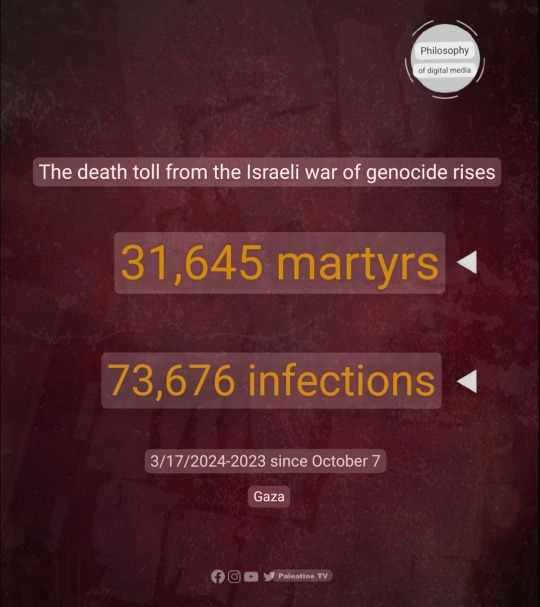


[ 📹 Footage shows scenes of the extent of the massive destruction in Hamad Town, in the Khan Yunis governate, in the southern Gaza Strip, resulting from the bombardment and purposeful destruction of local infrastructure by the Israali occupation army.]
[ 📸 A photograph published by WAFA News showing a Palestinian family performing Iftar after managing to scrape together enough food to break their fast during Ramadan in the south of Gaza after being displaced from the Jabalia Refugee Camp.]
[ 📈 A graphic showing the current death toll of 31'645 civilians killed and 73'676 others wounded as a result of the Zionist genocide in Gaza.]
🇮🇱⚔️🇵🇸 🚀🚀🚀🏘️💥🚑 🚨
STARVATION AND DESTITUION DURING RAMADAN AS BOMBINGS CONTINUE ON DAY 163 OF ISRAEL'S ONGOING GENOCIDE IN THE GAZA STRIP
On the 163rd day of Israel's ongoing war of genocide in the Gaza Strip, the Israeli occupation forces (IOF) committed a total of 9 new massacres of Palestinian families, resulting in the deaths of 92 Palestinian civilians, mostly women and children, and wounding another 130 others over the previous 24-hours.
As the majority of the Arab world break their fasts in the evening with large, warm, family meals, many of the Palestinian families of the Gaza Strip have nothing for iftar, and are unable to break their fasts or instead rely on soups of herbs or feed their families rotting bread as a shortage in flour continues largely unabated.
The Zionist occupation army continues to prevent the entry of the vast majority of food aid being sent to Gaza via various Arab and Western countries, especially aid intended for the northern Gaza Strip as residents starve in the streets, picking through garbage and consuming rotting food and contaminated water.
Even in the southern Gazan city of Rafah, stripped of its usual Ramadan decorations, only a few food stalls remain open in the local market, selling kunafa stuffed with nuts at a sticker-shock price of 80 sheckels per kilogram, or roughly $10 per pound, well beyond the reach of starving families who've been without work for more than five months as Israel continues its bombing and shelling campaign across the Palestinian enclave, even as basic materials and fuel necessary for rebuilding the Strip are blocked from entry.
As 40yo Ahmed Al-Kayyal tells local news organization WAFA, "There is no taste to Ramadan in this dirty and bloody war, a war of extermination, with no food or drink."
Local resident, Jamal Al-Khatib, had similar sentiments, telling the Palestinian news agency, "There is no food at all, so how will we break our fast in Ramadan? How can we rejoice when there is no shelter, electricity, or water?"
According to the United Nations Relief and Works Agency for Palestine (UNRWA), one in three children in the Gaza Strip are now "acutely malnourished" as famine looms over the Palestinian population of the enclave.
"Malnutrition among children is spreading fast and reaching devastating and unprecedented levels in the Gaza Strip due to the wide-reaching impacts of the war and ongoing restrictions on aid delivery," UNRWA shared in a post on the social media platform X.
"An immediate humanitarian ceasefire continues to provide the only chance to save children’s lives and end their suffering," the aid organization added.
Meanwhile, the bombing and shelling of civilian homes by the IOF continued relentlessly overnight, with a concentration of firepower on the central Gaza Strip.
In one example from last night's carnage, Zionist air forces bombed a civilian home belonging to the Thabet family in the Beshara neighborhood of Deir al-Balah, in the central Gaza Strip, resulting in the tragic deaths of at least 11 civilians, with the majority of victims being women and children. An update on the massacre said the death toll in the bombing has since risen to 12, with a large number of wounded victims reported in the atrocity as well.
An additional Israeli airstrike targeting a civilian vehicle in the city of Al-Zahra, in the central Gaza Strip, resulted in the killing of two Palestinians and wounded another.
Similarly, an Israeli bombing of a residential home in the New Camp area of Al-Nuseirat, also in central Gaza, killed another six Palestinians and wounded at least 10 others.
Occupation warplanes also concentrated their firepower on various neighborhoods of Gaza City, ensuring the complete and utter destruction of the local infrastructure of the most developed city in the Gaza Strip, making the future of the city uncertain as the landscape becomes more and more uninhabitable.
In one example, Zionist fighter jets bombarded the Al-Manara building in the vicinity of the Ashlelon Mosque in the Al-Shati Refugee Camp, west of Gaza City, while occupation aircraft also bombed the Nabil building on Al-Jalaa Street.
Occupation warplanes also bombed a group of Palestinian civilians picking hibiscus plants in the east of Gaza, with Al-Shifa Medical Complex reporting the death of one of the victims and the wounding of five others as a result.
In the southern Gaza Strip, the Israeli occupation army launched a firebelt targeting a residential square in Al-Qarara, east of Khan Yunis, while occupation air forces bombarded a tract of agricultural land near the border with Egypt, which, although no casualties were reported in the bombing, the systematic destruction of agricultural lands in the Gaza Strip is helping to contribute to the enforced famine and starvation of the Palestinian population.
In another sickening atrocity, Zionist occupation forces in gunboats opened fire on the tents of displaced Palestinian families on the coast, west of Rafah, in the south of Gaza, killing a 19yo woman when two of the Zionist soldiers' live bullets entered her skull.
As a result of Israel's ongoing war of genocide in the Gaza Strip, the endlessly rising death toll has now exceeded 31'645 Palestinians killed, more than 25'000 of which being women and children according to the United States Pentagon, with another 73'676 civilians wounded since the beginning of the current round of Israeli aggression beginning on October 7th, 2023.
#source1
#source2
#source3
#source4
#source5
#source6
#source7
#graphicsource
#photosource
#videosource
@WorkerSolidarityNews
#gaza#gaza strip#gaza news#gaza war#gaza genocide#genocide in gaza#genocide of palestinians#genocide#israeli genocide#israeli war crimes#war crimes#crimes against humanity#israeli occupation forces#israeli occupation#israel#war on gaza#palestine#palestine news#palestinians#israel palestine conflict#war#middle east#politics#news#geopolitics#world news#global news#international news#breaking news#current events
24 notes
·
View notes
Text
Feed Additives Market is valued at USD 40.3 billion in 2022 and is poised to grow at a significant CAGR of 5.7% over 2023-2029. Antimicrobial ingredients are frequently present in poultry feeds to aid growth and illness management. Due to the risk, they posed to public health, food safety, and cross-resistance, the European Union outlawed feed-grade antibiotic growth promoters. As a result, feed makers are using current technology to embrace new kinds of natural feed additives in addition to antibiotics. The botanical reserves in this new generation of growth promoters comprise appropriate herb or plant extract mixes. Various bioactive components, including alkaloids, bitters, flavonoids, glycosides, mucilage, saponins, and tannins, are present in herbs and plant extracts used as feed additives. Since herbs and plant extracts affect hunger and intestinal microbiota, they are predicted to have various impacts. This is because they stimulate pancreatic secretions, boosting immunological function and endogenous enzyme activity. Numerous plant products and their elements have extensive antibacterial action, antioxidant characteristics, and sedative effects. Probiotics aid in the microbial ecology of the gastrointestinal tract by preventing and controlling enteric infections in animals.
Request Sample : https://www.precisionbusinessinsights.com/request-sample/?product_id=56607
#feed additives market size#feed additives market growth drivers#feed additives market trends analysis#feed additives market share#feed additives market demand
0 notes
Note
my main snack that i carry around is (pre-shelled) sunflower seeds that i put seasonings on. if i want to occasionally share these with birds i run into (most often pigeons) what seasonings should i avoid?
Would you be able to just keep a plain bag (like an additional small one to bring to feed birds)? Unfortunately a lot of the seasonings that appeal to people aren’t good for birds; for example, I can almost guarantee most mixes have salt on them (which is fair - I personally wouldn’t eat unsalted sunflower seeds), which is bad for birds. Onion and garlic are also to be avoided. I guess it really depends what type of thing you usually put on? Most herbs (for example, Italian seasonings like basil & oregano) are safe, but IDK if there’s a big market for basil sunflower seeds.
89 notes
·
View notes
Note
This has maybe come up in the discourse already, but do you have a take on where people's perception of the economy being bad at the moment is coming from?
I dont think it's actually a grand mystery: its inflation. People hate inflation, because its price is in your face while its "benefits" (aka the macroeconomic causes) are diffuse. Am mobile so I dont have the graphs, but if you look at economic perceptions globally everywhere that had inflation the economy is bad. In those other places the high inflation paired with low growth, so the perception is pretty spot on. The US is decently unique in having high inflation and even higher growth; people are essentially being tricked into thinking it's bad.
But while that is the lion's share I think there have been real issues as well. Inflation is bad for held assets, for example, and the stock market has been lukewarm; so lots of asset classes took hits or underperformed. To the extent that your net wealth is from savings vs wages, you will see things a bit differently. In addition, the real estate market has been awful for buyers - huge price increases coupled with sky-high mortage rates. And note how most people dont really count the value of their home as an asset-in-the-bank, so a lot of that value increase isn't feeding into sentiment for owners while harshly punishing buyers. These rocky markets give more heft to the 'price of eggs' perception imo, since they are so core to family balance sheets.
21 notes
·
View notes
Text
Despite dairy being part of NZ’s economy (or possibly, because of it, this is the only mention of this scandal you’ll see.
CONTROVERSY OVER ‘CLIMATE CHANGE’ ADDITIVE BOVAER IN AUSTRALIAN BEEF SPARKS BOYCOTT CALLS
THE USE OF THE METHANE-REDUCING FEED ADDITIVE BOVAER TO CATTLE IN AUSTRALIA HAS IGNITED A HEATED DEBATE, WITH GROWING CALLS FOR A BOYCOTT OF BEEF PRODUCED USING THE ADDITIVE.
Critics are pointing to findings from a Japanese study that suggest potential negative impacts on male fertility, as well as skepticism over the safety assurances provided by its manufacturer.
Bovaer, developed by DSM-Firmenich, is marketed as a breakthrough solution to “reduce methane emissions from cattle” by up to 30%. However, a study by Japan’s Food Safety Commission raised concerns, reporting a reduction in testicular weight, sperm count, and sperm motility in animal trials involving the additive. These findings have fuelled criticism from politicians, farmers, and activists, who are questioning the safety of Bovaer for both animals and humans.
Former Australian MP Craig Kelly has been particularly vocal, sharing the Japanese study results and criticising retailers like Coles for stocking beef linked to Bovaer-fed cattle. Kelly also highlighted disclaimers from Bovaer’s manufacturer, which limits liability and provides no guarantees of the product’s safety or effectiveness.
3 notes
·
View notes